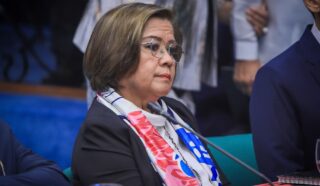Over the last decade, Southeast Asia has witnessed the power play of major countries in relation to the vital sea lanes and rich waters of the South China Sea. Yet, despite the Association of Southeast Asian Nations wanting to be on the driver’s seat, there is a general sense that it has not maximized its potential. Why hasn’t Asean moved more decisively? What exactly can Asean do, or develop?
To help shed light on these questions, Stratbase ADR Institute, the Carlos P. Romulo Foundation, and the Asean institutes of strategic and international studies, headed by the Center for Strategic and International Studies in Jakarta, organized a conference on Aug. 3-4 dubbed “Asean at 50: The Way Forward.” At the conference, Southeast Asian luminaries, including former and current government ministers, weighed in on Asean’s promise in the sociocultural, economic, and political-security domains.
As for answers, our advocacy at Stratbase ADR Institute is for Asean to define its leadership, especially while the room for action becomes more constrained. Now that Asean foreign ministers as well as their counterparts in Asean’s partner-countries are in Manila for top-level talks, the bloc should show that Southeast Asia is nobody’s backyard. To start, the largest states, Indonesia, the Philippines and Vietnam, should consider offering that leadership and serving as “the tip of the spear.”
It is hard to imagine a better time to do this than now, to put to rest growing doubts over the usual platforms for multilateral cooperation. Political, economic and social uncertainties are being felt worldwide, as societies pull inward. As former South Korean foreign minister Han Sung-joo said, “I think the most urgent issue is not how to update and change the current rules, but how to deal with the challenge of multilateralism that comes from unilateralistic impulses, nativistic nationalism, and antiglobalization.”
Asean’s challenges fall across its three domains. The sociocultural aspect, which includes a shared sense of Asean identity and a common notion of community, underpins how Asean can move together. Ambassador Albert del Rosario, Stratbase ADR Institute chair, puts it thus: “Bringing Asean citizens to feel kinship and a shared stake in the Association is an enormous and incomplete task for the sociocultural community. But it has to be done, because our region’s identity will be an anchor for stability and will drive future action.”
Asean is best known as an economic community. Collectively, the Asean economy is among the largest in the world and includes some of the fastest-growing. Yet, Asean is in a tricky situation with China, which happens to be the bloc’s second largest trading partner after intra-Asean trade. One concern, especially for those who have political disagreements with China, is that there is little to separate our disagreements with China from our economic ties with it. Governments fear economic backlash. As CPR Foundation chair Roberto Romulo noted, “the world has moved on from a unipolar center of power to one where multipolar centers of geopolitical and economic powers compete for allegiance in return for benefits.”
Finally, China’s unabated militarization of the South China Sea, in defiance of an arbitration ruling handed down last year, is hard to ignore. China’s increasing assertiveness is disturbing the region’s security architecture, just as it is undermining Asean’s internal cohesion and quest for centrality in East Asian affairs. Perhaps, for Asean to be unified, it must find a way to get its governance moving. Its consensus approach has been repeatedly criticized for the difficulties in decision-making. The consensus system empowers the few over the many and contributes to why Asean seems to be lost at sea.
Dindo Manhit is president of Stratbase ADR Institute.


